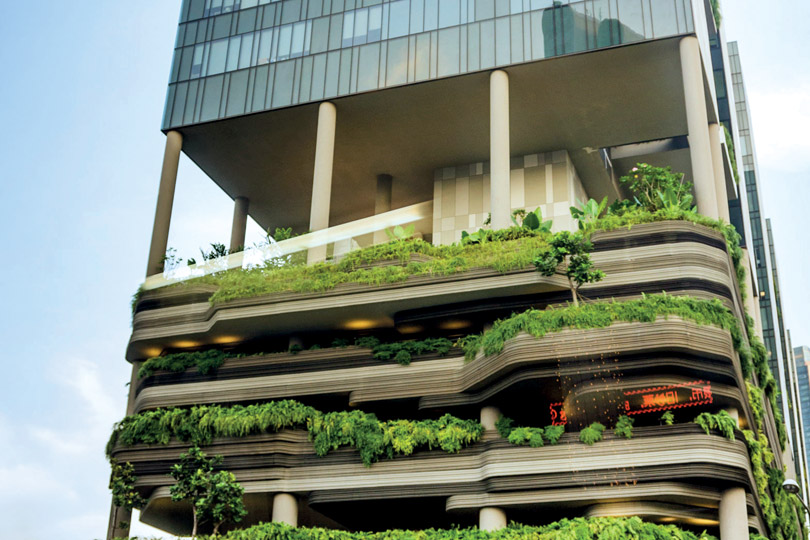
According to the Global Construction 2030 report conducted by Global Construction Perspectives and Oxford Economics, global construction is expected to grow 3.9 per cent per annum to 2030, more than a percentage point faster than the forecasted global GDP growth rate. The strong pace of growth will be powered by both developed countries recovering from their economic malaise, as well as the rapid industrialisation of developing countries.
All in all, global construction is expected to grow by 85 per cent US$15.5 trillion worldwide by 2030. As a result, the building products and construction materials sector is expected to benefit, growing in tandem with construction demand.
Within the sector itself, there has also been a further consolidation with major players consolidating their positions through corporate deals, such as the merger between the world's largest cement manufacturers, Holcim Ltd and Lafarge SA in 2015. This will provide them with the financial position and scale to capitalise on the upturn in construction demand too.
Growing Popularity of Green Buildings Driving Demand for Materials
Another bright spot on the horizon is the growth of the green building materials sector. Green buildings are structures that are environmentally responsible and efficient with respect to resources throughout the lifecycle of the building. Materials utilised for this type of construction are known as green building materials. Based on new research from Technavio, this market is expected to top US$260 billion by 2019, growing at a CAGR of 13.21 per cent across the next four years.The report noted that Europe was responsible for the highest share of the global green building materials market, followed by North America and the Asia Pacific (APAC) region. In particular, it is APAC that is expected to see explosive growth in this area, especially countries such as India, Singapore, Malaysia, and Indonesia. This increased demand is the result of government pushes, increasing buy-in from property developers, and rising recognition of the benefits of green buildings from buyers and tenants.
Green Building Movement Takes Off in Singapore
Meanwhile in Singapore, the green building movement has taken off significantly with three reiterations of the Green Building Masterplan launched by the Building and Construction Authority (BCA) since 2006. Through a mixture of incentive schemes and regulatory policies, BCA has sought to encourage developers in Singapore to build more green buildings.At the heart of the BCA’s Third Green Building Masterplan, there will be a new US$S50 million incentive scheme for existing buildings which will support efforts by building owners to adopt sustainable initiatives and improve energy efficiency. This will be through co-funding up to half of the cost of retrofitting buildings for energy improvements, with sums of up to S$3 million for building owners and S$20,000 for individual occupants.
To date, the three Masterplans have generated considerable results, with the number of green buildings having grown from 17 in 2005 to 2,100 today – or the equivalent to a quarter of Singapore’s total gross built up area. This places the Republic firmly on track to achieve its target of greening 80 per cent of its building stock by 2030.
New Building Technologies and Materials to Boost Productivity
Besides achieving greater sustainability for its buildings, Singapore has also been looking at new building technologies and materials to boost productivity and reduce manpower requirements in constructions. This has been in the form of driving greater adoption of Prefabricated Pre-Finished Volumetric Construction (PPVC) and use of Cross Laminated Timber (CLT).PPVC is a construction method, which allows prefabricated individual rooms to be built off-site in a factory, before being transported to the building location and assembled together in a Lego-like manner. Each of the room components are completely fitted out during the manufacturing phase, allowing for greater productivity, with less manpower and time, as well as a reduction in noise pollution.
Speaking at the opening of the SEF SpaceHub – the first ICPH (integrated construction and prefabrication hub) built here – then Senior Minister of State for National Development Lee Yi Shyan shared that the government intends to develop 10 such ICPHs by 2020, underlining its commitment to PPVC technology.
New Timber Material Helps Developers, Saving Time and Manpower
Meanwhile, cross-laminated timber (CLT) is also gradually being introduced into Singapore’s building and construction landscape. Already widely-used in Europe for more than a decade, CLT is manufactured by bonding layers of timber at right angles to produce solid timber panels that can be used as structural components in buildings.Amongst the many benefits of using CLT in building and construction include the reduction of waste, noise and pollution onsite. Using CLT for construction also allows for quicker completion and less manpower requirements. There are also sustainability benefits such as the lower energy and water consumption of any building material, and its ability to be recycled and reused. Meanwhile, usage of CLT will further reduce the need to import sand and aggregate, which benefits the construction sector.